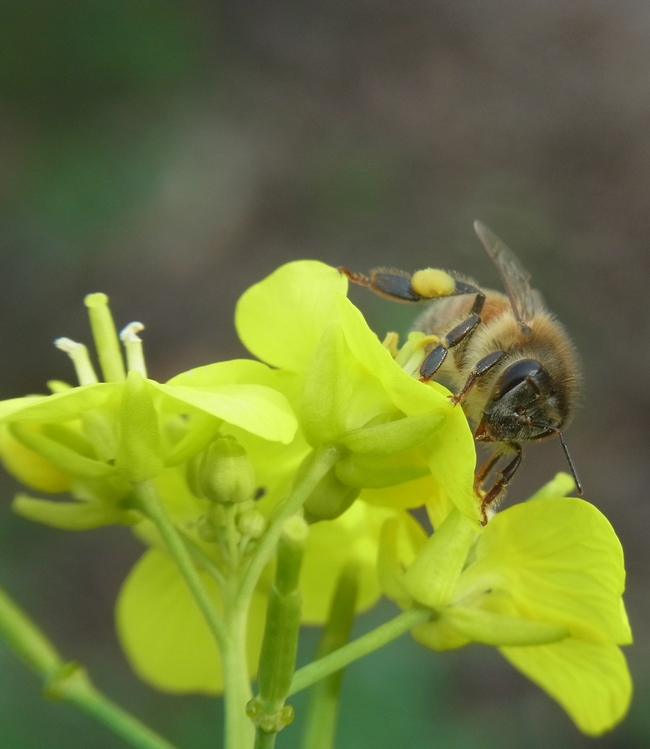There are many California specialty crops that are harvested for their foliage; since we're not harvesting a fruit or vegetable folks don't often think of these as providing resources for bees. However even though we eat the foliage, these plants still need to flower and be pollinated so that seed for the next crop can be produced.
One of the healthiest of these specialty crops -- both for us and for bees -- is bok choy. Sometimes referred to as Chinese cabbage, it is in the mustard family (Brassicaceae) and goes by the scientific name Brassica rapa subsp. chinensis. California leads the US in production of Asian vegetables; boy choy is a cool-season crop that is grown along the Central Coast from Salinas to Santa Maria.
Fortunately for us, this superfood that is full of vitamins and antioxidants is easy to grow at home. Interestingly, recent research has shown that the antioxidant levels in bok choy leaves increase with stir-frying, which is the common method of cooking (Food Chemisty. 2016. 203:23-27 and International Journal of Food Properties. 2016. 19(11):2536-2549).
Plants are available at the garden center in late fall. Grow in full sun or light shade and provide plenty of water. If you don't have a garden, bok choy can easily be grown in a large container like a 5-gallon bucket. Here's one of our plants at the Haven about a month after planting.

The normal harvest recommendation is to cut off the entire plant at the base. To feed the bees, however, remove individual leaves as needed and leave the plant intact. So long as there is not a hard frost, it will go on to flower in January.
The process of leafy vegetables flowering is called "bolting" and is generally thought to make the plant inedible. But not to the bees! This is especially true in bok choy; the flower structure of this plant makes both pollen and nectar available to bees, which isn't the case for all mustards. At the Honey Bee Haven we plant several beds of various Brassicaeae for the sole purpose of letting them flower to feed our bees. Here's a honey bee on bok choy in late January.
